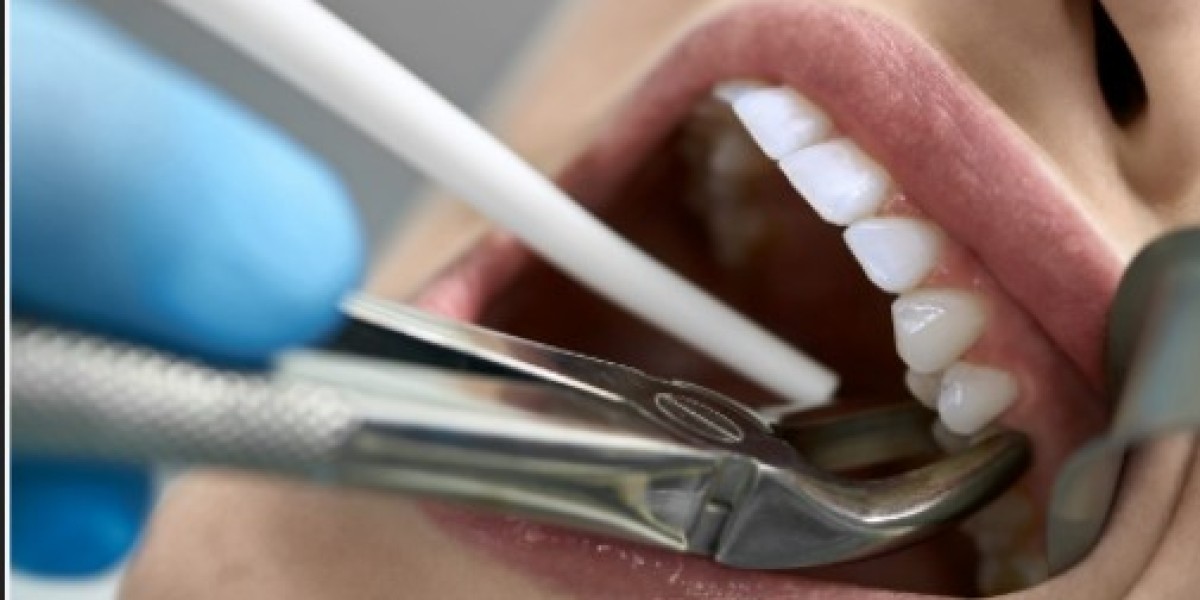Dental Extractions involve the removal of a tooth from its socket in the jawbone. While this procedure is often seen as a last resort, it can be necessary for various reasons. This guide covers everything you need to know about dental extractions, from reasons for the procedure to aftercare tips.
Reasons for Dental Extractions
1. Tooth Decay
Severe tooth decay that cannot be repaired with a filling or other restorative treatments may require extraction.
2. Gum Disease
Advanced periodontal disease can cause teeth to loosen or become unstable, making extraction necessary to prevent further oral health issues.
3. Tooth Infection
Infections that cannot be treated with antibiotics or root canal therapy may lead to extraction to prevent the spread of infection.
4. Crowded Teeth
In cases where there is not enough space in the mouth for all the teeth, such as before orthodontic treatment, extractions might be necessary.
5. Impacted Teeth
Teeth that are trapped in the jawbone or gums, such as wisdom teeth, may need to be extracted if they cause pain or other problems.
6. Tooth Fracture
A tooth that is severely fractured and cannot be repaired might need to be extracted.
Types of Dental Extractions
1. Simple Extraction
Performed on teeth that are visible and can be easily grasped with dental forceps. This procedure is typically done under local anesthesia.
2. Surgical Extraction
Required for teeth that are not easily accessible, such as those that are broken or impacted. This procedure involves making an incision in the gum to access the tooth and is often performed under sedation or general anesthesia.
The Extraction Procedure
1. Preparation
Before the extraction, your dentist will take X-rays to assess the tooth's position and plan the procedure.
2. Anesthesia
Local anesthesia is administered to numb the area around the tooth. For more complex extractions, sedation or general anesthesia might be used.
3. Extraction
For a simple extraction, the dentist will loosen the tooth with an instrument called an elevator and then remove it with forceps. For a surgical extraction, the dentist will make an incision in the gum, remove bone if necessary, and then extract the tooth.
4. Post-Extraction Care
After the tooth is removed, the dentist will place gauze over the extraction site to control bleeding and provide post-operative instructions.
Post-Extraction Care
1. Managing Pain and Swelling
Over-the-counter pain relievers and ice packs can help manage pain and swelling. Your dentist may prescribe stronger medication if needed.
2. Oral Hygiene
Continue to brush and floss, but avoid the extraction site for the first 24 hours. After that, gently brush the area with a soft brush.
3. Diet
Stick to soft foods and avoid hot or spicy foods for the first few days. Drink plenty of fluids, but avoid using straws, as the suction can dislodge the blood clot.
4. Activity Restrictions
Avoid strenuous activities and heavy lifting for a few days to prevent complications.
5. Follow-Up
Attend any follow-up appointments to ensure proper healing and to address any concerns.
Potential Complications
1. Dry Socket
A condition where the blood clot at the extraction site becomes dislodged or dissolves, leading to pain and delayed healing. It can be managed with treatment from your dentist.
2. Infection
Signs of infection include increased pain, swelling, and fever. Contact your dentist if you experience these symptoms.
3. Nerve Injury
In rare cases, the extraction may damage nerves, leading to numbness or tingling in the lips, tongue, or chin.
Conclusion
Dental extractions, while sometimes necessary, are generally straightforward procedures with manageable recovery. Following your dentist’s instructions for care and attending follow-up appointments will help ensure a smooth healing process.








